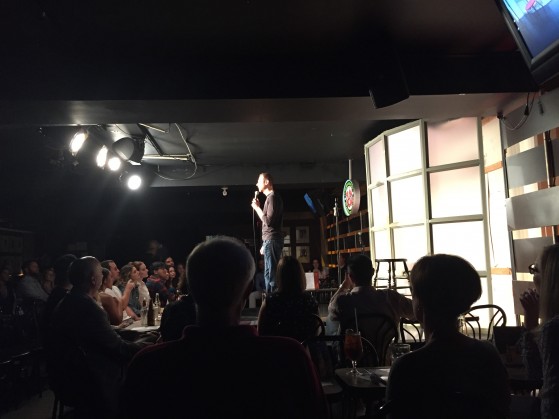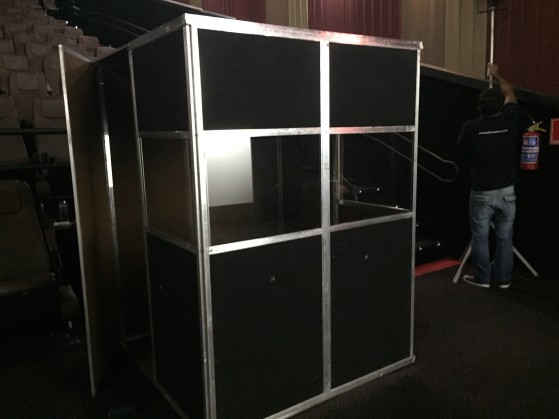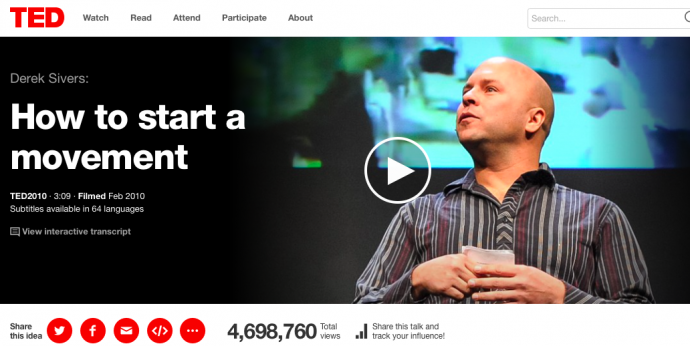Toronto, Canada.
Can you learn a lot about how to become a great speaker from watching other speakers? Absolutely.
But personally, I learn more from a slightly different profession: Stand-up comics.
After giving a speech in New Jersey yesterday morning, I then flew to Toronto, Canada where I am scheduled to give a speech on Monday morning. So I found myself with some free-time over the weekend in this amazing city.
I decided to do some professional development and headed for the comedy club “Yuk Yuk’s” in downtown Toronto.
Watching comics perform the extremely difficult art of being funny is, for me, the best way to learn how to be a speaker.
You get to study how they build up their stories for the punch-line, how they use their bodies to enhance the message – and perhaps most importantly, how they deal with the audience, and in particular, the hecklers.
One of the comics last night described the job of being a comedian as: “Building up tension and releasing it.”
I think that is a great way of putting it.
But today, I am not going to write about how to structure a joke. Instead, I will talk about interactions with the audience.
A few weeks back, I had the privilege to see Russell Peters live in Singapore. Yes, going to a lot of stand-up comedy is a great perk of being a speaker.
Russell is one of the masters of “working the crowd”. A big part of his show is just him talking to the audience.
Watching him “pick” on different members of the audience reminded me about the power of transforming a speech from a one-way-communication to a two-way-conversation.
The funny thing is that you can get this “conversation feeling” even in a huge group. In the case of Russell Peters, there were more than 2000 people in the crowd.
Now, interacting with the audience means, per definition, that you loose a bit of the control that you have if you “only” stand on the stage and speak your message.
But the advantage is that you get a MUCH closer connection with the crowd.
And done right, that part of the speech where you interact with the audience is going to be the best section of your speech, and the part that the audience brings up when they come up and thank you for your “amazing speech”.
If someone in the audience says something during your speech, do not just ignore it – invite the person into the speech by asking “Excuse me, what did you say?”
If a person answers a question you ask the audience, take this opportunity to turn it into a “micro conversation” by asking a follow up question.
But remember, you are the “guy with the mike” (or “gal with the mike”) and that means two things:
1) The power of your words are multiplied, which means that anything negative you say will hurt more, so be careful of what you say.
The same words in a normal conversation might not be hurtful to a person in the audience when spoken in a one-on-one conversation, but if magnified from the stage, they might.
2) As the person on the stage, you can easily decide when the conversation is over by just moving on. Some members of the audience might get a bit too excited when being invited to be part of a speech, but if that happens, simply cut them off in a nice way by saying “thanks for your comments, now let’s move on.” Or something to that effect.
Audience interaction is like saffron in a soup – it can make the dish stand out – but be careful of using too much or it might ruin the overall experience.
Unless you are a master of audience interaction like Russell Peters, limit the amount of it that you use. But do not be afraid to “spice up” your speech with a short and sweet infusion of audience participation.
Great speakers know that those magical seconds when the speaker “leaves the safety of the prepared speech from the stage” is where the magic happens.
Think about how music stars leave the stage to go into the audience, or lets the audience sing part of the song while the singer is silent – they normally do not do it a lot, but the fact that they do it a little bit makes the crowd go wild.
Lesson: Use your audience – they are the best “prop” you will ever find.
The word “audience” comes from the Latin word “audire” which means “hear”. Turn that meaning on its head and ask yourself: When you speak, are you “hearing” the audience?
Make your speeches better by thinking of the audience as someone that you not only speak TO but whom you invite to speak TOO.
P.S. Russell Peters actually started his career at the amateur night at Yuk Yuk’s in Toronto. Now, he travels the world with his “Almost Famous” tour. Check out this video for some examples of his comedy routine full of audience interaction:
[youtube start=832]https://www.youtube.com/watch?v=fI2FCdvV29A[/youtube]


